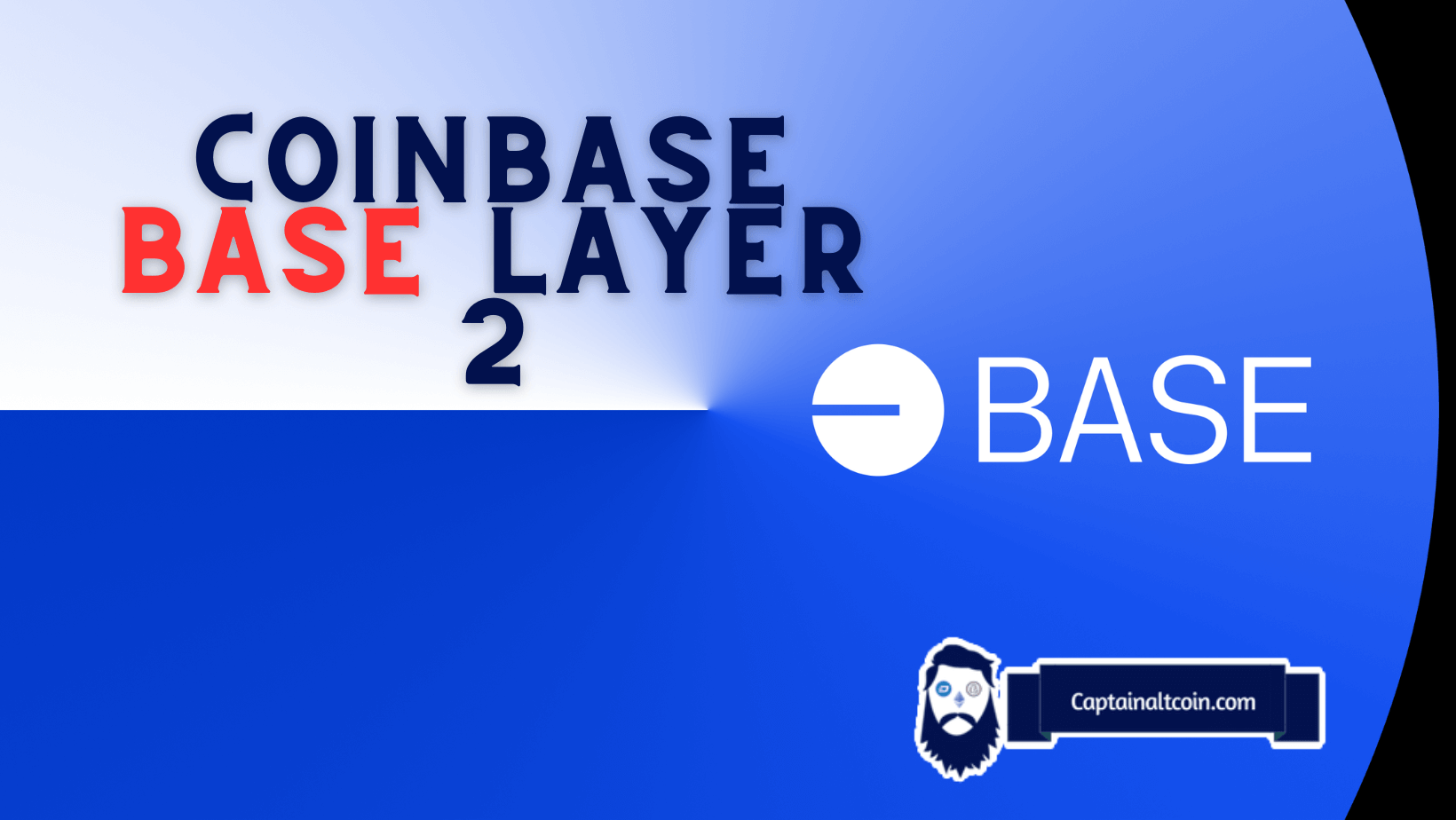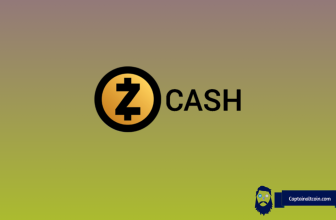
What you'll learn 👉
Coinbase’s Layer 2 Network: A Complete Guide
Cryptocurrency exchange giant Coinbase has been making waves in the crypto industry with the launch of its Layer 2 network. This network is designed to enhance transaction speeds and reduce costs on blockchains like Bitcoin and Ethereum, making it an attractive proposition for developers and crypto enthusiasts alike.
| Topic | Summary |
|---|---|
| What is Coinbase’s Layer 2 Network? | A channel on top of a Layer 1 blockchain network to improve blockchain scalability and reduce transaction times and costs. |
| Benefits of Using Coinbase’s Layer 2 Network | Faster and cheaper transactions, easier access to decentralized innovation, and a developer-friendly way to build decentralized apps. |
| How Does Coinbase’s Layer 2 Network Compare to Other Layer 2 Solutions? | Base is a cost-efficient and developer-friendly solution built on the Optimism network, offering an EVM-like environment and optimizing transaction speed and fees. |
| Transferring Funds to Coinbase’s Layer 2 Network | Can be done using a blockchain bridge, such as the official Base Bridge, or by acquiring free Goerli ETH Tokens directly on Base from the Base GETH Faucet. |
| Challenges and Opportunities for Base | Regulatory uncertainty, low liquidity, limited integration with exchanges, and lengthy withdrawal times are challenges, while a large user base, low fees, fast transaction times, and a developer-friendly environment provide opportunities. |
| Fee Structure | Base’s fee structure is competitive with other Layer 2 solutions, charging initial fees between $0.10 to $0.20, and fees could drop as low as $0.01 in the future. |
| Conclusion | Coinbase’s Layer 2 network, Base, is a significant step towards the creation of a robust and scalable infrastructure for decentralized finance, with potential benefits for developers and non-crypto users alike. |
What is Coinbase’s Layer 2 Network?
Coinbase’s Layer 2 network, known as Base, is a channel that sits on top of a Layer 1 (L1) blockchain network. L2 networks are designed to improve blockchain scalability by reducing the number of nodes or participants required to validate transactions within the L2 network, thereby reducing the time it takes to achieve consensus.
All confirmed transactions on an L2 are periodically batched together and submitted back to the L1 where they are validated as one large transaction and added to the next block on the L1 chain. This process enhances transaction speeds and reduces costs, making it easier for users to access decentralized innovation.
Benefits of Using Coinbase’s Layer 2 Network
There are several benefits to using Coinbase’s Layer 2 network. One of the primary benefits is that it offers faster and cheaper transactions, providing easier access to decentralized innovation. Base, Coinbase’s newly-launched Layer 2 solution built on the Optimism tech stack, offers a secure, low-cost, developer-friendly way for anyone, anywhere, to build decentralized apps.
Developers could be enticed to work with Base since it will unlock access to Coinbase’s massive existing user base of non-DeFi natives. With Ethereum’s transaction fees skyrocketing due to network congestion, using Base can significantly reduce transaction costs, allowing users to enjoy cheaper and faster transactions.
Moreover, using the network’s OP Stack, Base offers an EVM-like environment that gives developers a complete toolkit for developing DApps on a scalable network. Since it is a Layer 2 solution, it does not perform entire transactions on the mainnet, shifting transactions on its chain and using its storage, allowing Ethereum to run swiftly while still maintaining its security.
How Does Coinbase’s Layer 2 Network Compare to Other Layer 2 Solutions?
Compared to other Layer 2 solutions like Polygon, Optimism, and Arbitrum, Base is a cost-efficient scaling solution that offers an entirely secure and decentralized environment for developers to build Web3 apps. It is built on the Optimism network, one of the most popular Layer 2 Ethereum blockchains. It offers Optimism rollups that take mainnet traffic to L2, optimizing transaction speed and cutting down on fees.
Base’s fee structure is competitive with other Layer 2 solutions in the market. It reportedly charges initial fees between $0.10 to $0.20, close to those of Arbitrum or Optimism. According to the team, fees could drop as low as $0.01 in the future.
Using Coinbase’s Layer 2 Network – How To Transfer Funds to Base
Transferring funds to Coinbase’s Layer 2 network, Base, can be done using a blockchain bridge, also known as a cross-chain bridge. This bridge connects two blockchains and enables cryptocurrency to be transferred from one chain to another.
To bridge to Coinbase Base, you can use the official Base Bridge, which enables users to connect their wallet and transfer Goerli ETH from the Goerli ETH testnet to Coinbase’s Layer 2 network. The Base Bridge links your MetaMask, Coinbase, or other Web3 wallet to bridge Goerli ETH to the network. Note that users can only bridge Goerli ETH (GETH) from the Goerli ETH testnet to Coinbase’s Layer 2 network using the Base Bridge.
Users can also acquire free Goerli ETH Tokens directly on Base from the Base GETH Faucet. Coinbase intends to launch its mainnet in the coming months and will gradually evolve into a contributor to Base by providing decentralized governance, products, and services built on top of Base.
Challenges and Opportunities for Base
While there are many potential opportunities for Base, there are also some challenges and risks that the network may face. One of the main challenges is the regulatory uncertainty that surrounds the cryptocurrency market. The regulatory landscape for cryptocurrencies is constantly evolving, and there is a risk that new regulations may hinder the growth of the Base network.
Another potential challenge for Base is the issue of low liquidity. As a relatively new network, it may take some time for Base to attract a critical mass of users and achieve the level of liquidity needed to support a wide range of decentralized applications. This could limit the number of applications that are built on the Base network and reduce the network’s overall value proposition.
Another issue that could impact the success of Base is the limited integration with exchanges. Without widespread exchange integration, it may be difficult for users to access the network and participate in the ecosystem. This could limit the adoption of the Base network and make it less appealing to developers and users.
Finally, one potential challenge for Base is the lengthy withdrawal times required to transfer funds back to the mainchain/mainnet. This could limit the utility of the network for users who want to move funds quickly or engage in high-frequency trading.
Despite these challenges, there are also many opportunities for the Base network. With its low fees, fast transaction times, and developer-friendly features, Base has the potential to attract a large user base and become a leading Layer 2 solution. By leveraging the Optimism network and offering a secure, low-cost, and decentralized platform for building Web3 apps, Base could be well-positioned to capitalize on the growing demand for decentralized applications.
Furthermore, Coinbase’s massive existing user base of non-DeFi natives could be a significant advantage for the Base network. By offering a user-friendly platform that is accessible to a broad range of users, Base could help to onboard a new wave of users into the crypto market and drive mainstream adoption of decentralized finance.
In summary, while Base faces some challenges and risks, it also has significant potential as a cost-efficient and developer-friendly Layer 2 solution. By addressing these challenges and capitalizing on its unique value proposition, Base could become a major player in the decentralized application ecosystem and help to drive the growth of Web3.
Coinbase’s Layer 2 Network vs. Other Layer 2 Solutions
Compared to other Layer 2 solutions such as Polygon, Optimism, and Arbitrum, Base is a cost-efficient scaling solution that offers a completely secure and decentralized environment for developers to build Web3 apps. It is built on the Optimism network, one of the most popular Layer 2 Ethereum blockchains.
It offers Optimism rollups that take mainnet traffic to L2, optimizing transaction speed and cutting down on fees. Moreover, using the network’s OP Stack, Base offers an EVM-like environment that gives developers a complete toolkit for developing DApps on a scalable network. Since it is a Layer 2 solution, it does not perform entire transactions on the mainnet, shifting transactions on its chain and using its storage, allowing Ethereum to run swiftly while still maintaining its security.
Base has the potential to bring billions of non-crypto users into the crypto market. The need for a developer-friendly platform is important for crypto adoption and is part of what has shaped Coinbase’s Base L2 solution. Coinbase wants the platform to be open-source and free to use for everyone. It will give developers a chance to reach out to the large audience of Coinbase and promote the platform’s products and help Base become a serious contender among L2 networks.
Fee Structure
According to the sources provided, Base’s fee structure is competitive with other Layer 2 solutions in the market. Base reportedly charges initial fees between $0.10 to $0.20, close to those of Arbitrum or Optimism, the two leading Ethereum layer-2 solutions. According to the team, fees could drop as low as $0.01 in the future.
In general, Layer 2 solutions are designed to sidestep high gas fees on Ethereum by offering fractional transaction costs for multiple users. Layer 2 solutions can free up traffic on the main chain by only sending one large transaction to the main chain, and individuals only pay a small fee. Other Layer 2 solutions do not charge for certain transactions, while most Layer 2 solutions charge an execution fee (on layer 1) and a security fee (on layer 2).
The cost structure of Layer 2 solutions differs depending on the action. For example, sending Ether (ETH) would have a different cost than swapping tokens on a network. It is essential to note that the cost structure of Layer 2 solutions is affected by the specific Layer 2 technology and implementation. The details of how transactions are submitted to these Layer 2 nodes vary significantly between different Layer 2 technologies and implementations.
Conclusion
In conclusion, Coinbase’s Layer 2 network, Base, is a significant step towards the creation of a robust and scalable infrastructure for decentralized finance. Base’s developer-friendly environment, combined with its low transaction fees and potential to bring non-crypto users into the market, makes it an attractive proposition for developers.
While the cost structure of Layer 2 solutions differs depending on the action and implementation, Base’s fee structure is competitive with other Layer 2 solutions in the market. With the launch of Base, Coinbase aims to make on-chain the next online and onboard 1B+ users into the cryptoeconomy. As a result, Base could play a significant role in driving mainstream adoption of blockchain technology and decentralized finance.







